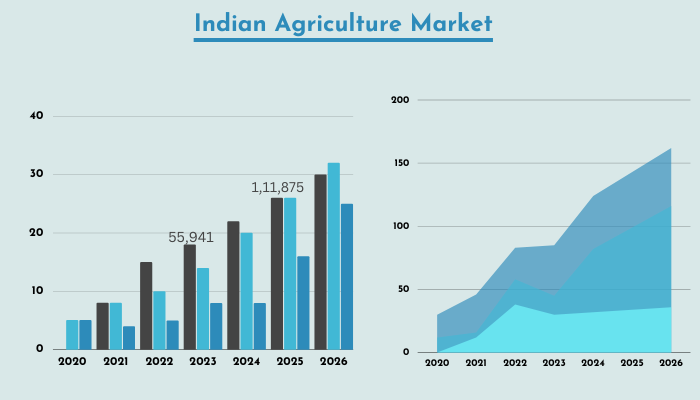Project Report on Agriculture Marketing
Introduction
Project report on Agriculture Marketing is as follows.
The services of agricultural products from the farm to the consumer fall under the category of agricultural marketing. The process of agricultural marketing entails acquiring, storing, preparing, shipping, and delivering various farmed supplies across the nation. In agriculture marketing, the sale of an agricultural product depends on a number of factors, such as the current product demand, the availability of storage, etc. The phrase refers to the complete spectrum of agricultural product supply chain operations, whether they are carried out by sporadic sales or through a more intricate network, such as one incorporating contract farming.

The agricultural sector requires organized and efficient markets, especially close to farmers, to encourage expansion, job creation, lucrative prices, and economic growth in the nation’s rural communities. A supporting mechanism has to be installed as well. established for the purchase of agricultural products straight from the fields of farmers and to create a strong connection between farm produce and the retail chain in the food processing sector. Given that agriculture is a state subject, an APMC act was created in 2003 and distributed to the States and UTs for adoption.
Project Report Sample On
Agriculture Marketing
Get a Completely Custom Project Report
India is an agricultural nation, and either directly or indirectly, one-third of the population is reliant on the industry. Since ancient times, agriculture has been the mainstay of the Indian economy. Approximately 25% of the country’s GDP is contributed by agriculture in India. Given that food is the greatest requirement of humanity, commercializing agricultural output has received a lot of attention. Due to this, the proper production and equitable distribution of food have recently become a top concern for the entire world.
Market Potential Of Agriculture Marketing
In 2020, the Indian agriculture market had a value of approximately INR 55,994 billion. By 2026, the market is projected to have grown at a CAGR of roughly 12%, reaching a value of around INR 111,916 billion.
In terms of GDP contribution, the agriculture sector plays a considerable role in the Indian economy. For the vast majority of people in the country, it is a source of employment. Given that India is already one of the world’s greatest agricultural producers, this industry now has enormous growth potential. India currently ranks behind China and the United States as the third-largest agricultural producer in the world in terms of value. With nearly 20% of the world’s population, India is the second-most populous country, which presents a fantastic chance for the country’s agriculture industry to flourish. As the population has increased, so has the need for diverse agricultural products. To suit the varied food demands of people, farmers have introduced better milking, fishing, and livestock techniques and technologies. Over the past few decades, this field has undergone a number of developments. Among them include the growing influence of the private sector in manufacturing, branding, and marketing, as well as the expansion of contract farming, automated agriculture, easy credit programs, greater exports, agrochemicals, and high-yield seeds. These elements are contributing to India’s agriculture market’s brisk expansion.

Most governments have attempted to encourage better agricultural marketing at some point. In the US, the USDA’s Agricultural Marketing Service (AMS) division offers programs that support standardization and grading, give market news services, and conduct tests. AMS monitors marketing agreements and places orders for promotion and research projects. Additionally, it makes purchases for federal food programs. Additionally, USDA supports agriculture marketing research at several colleges. Before and during the Second World War, organizations like the Milk Marketing Board and the Egg Marketing Board supported the marketing of some commodities in the United Kingdom. The 1970s saw the closure of these boards. Britain established marketing boards as a colonial force in numerous nations, especially in Africa.
Government-sponsored marketing or agricultural business units have been developed in a number of developing nations. As a result of the deregulation of the agriculture sector and the closure of marketing boards nationwide, South Africa, for instance, established the National Agricultural Marketing Council (NAMC). The National Institute of Agricultural Marketing has been around for a while in India.

